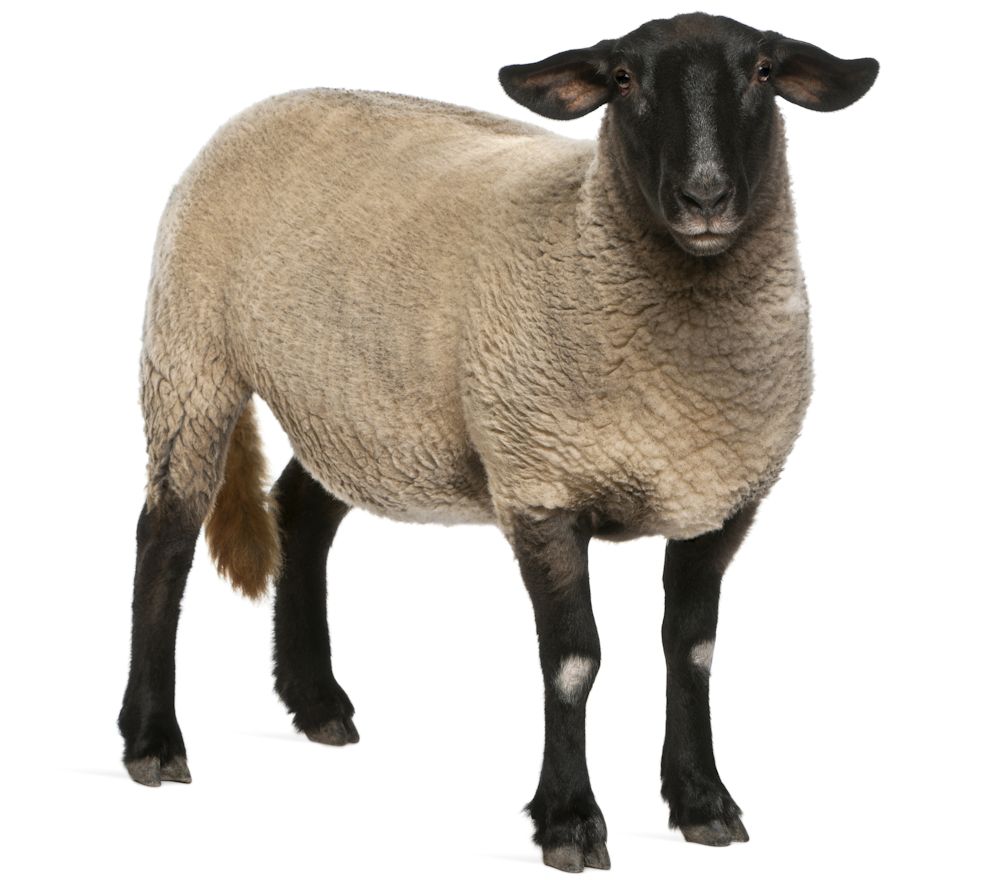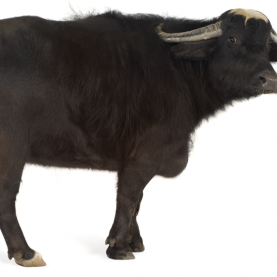Ewe
Ewes are female sheep, ruminant mammals principally raised for their milk, meat and wool. While ewe’s milk represents a key foodstuff for some populations, elsewhere in the world it is generally transformed into dairy products.
Ewes, a key food source for some populations
Ewes are the females of the species Ovis aries or sheep, belonging to the ovine (Ovis) genus of herbivorous mammals. They are among the first useful animals to have been domesticated.
Along with goats, ewes are very important dairy animals in many developing countries. Their milk has a higher nutritional value than cow’s milk or goat’s milk and production costs are low. The generational renewal of ewes is swift, owing to their gestation period of just five months.
Breeding ewes
Ewes can weigh up to 100 kg and grow to a length of between 1 m and 1.5 m, tail included. Ewes are ruminants and, like cows, have a complex digestive system made of four different stomachs. A flock of ewes is usually fertilised by a single male, whether selected by the farmer or the one which dominated other rams in combat. The gestation period lasts for approximately 150 days and ewes produce one or two lambs.
Nowadays, ewes are mainly bred for their milk and meat, and are equally well-suited to either. Southern European Union countries are dominated by dairy ewe farms, while Oceania, South America and other parts of Europe are home to a greater concentration of suckler ewe farms, producing lamb meat.
Milk production from ewes represents only one percent of global milk production, equivalent to ten million tonnes per year. The main producers of ewe’s milk are Greece, Turkey and China (a country with one of the largest number of ewes in the world). Meat production generally comes from male lambs, each providing 8 to 15 kg of meat. New Zealand is the largest exporter of lamb, followed by Australia and South America.
Use of ewe resources
Among the many of varieties of ewes, a few breeds such as the Basco-béarnais, the Manchega and the Corsican, produce large amounts of milk intended for the production of cheese, such as feta and kasseri in Greece, and Roquefort in France, popular for their distinctive taste. Generally speaking, it is hard to find ewe’s milk yoghurt on supermarket shelves. This is largely because ewe’s milk is less abundant and costs more than cow’s milk.
Most varieties of ewes are raised for their wool or their meat. Wool is no longer the most important product of sheep rearing in Europe and America, but remains significant in Oceania.
Ewe breeding also leads to the direct sale of animals in some developing countries, as well as the sale of sheepskins and the use of the manure as fertilizer.
Compared to goat’s and cow’s milk, ewe’s milk is richer in proteins (5.5% versus 3.3%) and in lipids (7% versus 4%). It is also an important source of vitamins A and E and of calcium.
The first mammal to be cloned
In 1996, Dolly the sheep was the first mammal to be cloned from adult cells (taken from a ewe over the age of six). In turn, Dolly even gave birth to a number of lambs, proving that a cloned animal was able to reproduce without any significant problems.
Commission européenne, 2011. Évaluation des mesures de la PAC dans le secteur Ovin Caprin. Rapport Final [en ligne]. [Consulté le 28 avril 2016]. Disponible à l’adresse : http://ec.europa.eu/agriculture/eval/reports/sheep-goat/chapter2_fr.pdf
FAO | Organisation des Nations Unies pour l’alimentation et l’agriculture, 2016. Production laitière. Les petits ruminants [en ligne]. [Consulté le 28 avril 2016]. Disponible à l’adresse : http://www.fao.org/agriculture/dairy-gateway/production-laitiere/les-animaux-laitiers/les-petits-ruminants/fr/#.VyHOTFI3lw-
Centre National Interprofessionnel de l’Économie Laitière, s.d. Le comportement des consommateurs. La filière laitière [en ligne]. [Consulté le 28 avril 2016]. Disponible à l’adresse : http://www.produits-laitiers.com/le-comportement-des-consommateurs/
Centre National Interprofessionnel de l’Économie Laitière, s.d. Monde. La filière laitière [en ligne]. [Consulté le 28 avril 2016]. Disponible à l’adresse : http://www.produits-laitiers.com/l-economie-laitiere-dans-le-monde/
Centre National Interprofessionnel de l’Économie Laitière, s.d. Le lait : un produit varié avec différentes saveurs. Les produits laitiers [en ligne]. [Consulté le 28 avril 2016]. Disponible à l’adresse : http://www.produits-laitiers.com/le-lait/
Le Journal d’Adrouet, s.d. Les brebis et le fromage [en ligne]. [Consulté le 28 avril 2016]. Disponible à l’adresse : http://androuet.com/Les%20brebis%20et%20le%20fromage-31-guide-fromage.html
Switzerland Cheese Marketing, 2016. Fromages de chèvre et de brebis : une saine variation [en ligne]. [Consulté le 28 avril 2016]. Disponible à l’adresse : http://www.fromagesuisse.ch/bon-a-savoir/alimentation-et-sante/information-nutritionnelle/fromages-de-chevre-et-de-brebis-une-saine-variation.html
NEYRAT, Paule, 2008. Fromages de brebis [en ligne]. [Consulté le 28 avril 2016]. Disponible à l’adresse : http://www.e-sante.fr/fromages-brebis/3/guide/1671
NAMY, Olivier, 2003. Mort de Dolly, la première brebis clonée. Futura-Sciences [en ligne]. [Consulté le 28 avril 2016]. Disponible à l’adresse : http://www.futura-sciences.com/magazines/sante/infos/actu/d/vie-mort-dolly-premiere-brebis-clonee-1709/




